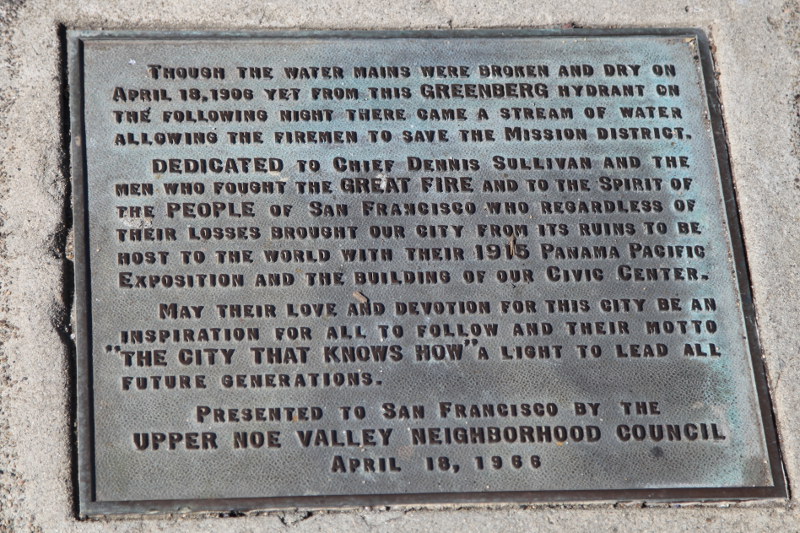Though the water mains were broken and dry on April 18, 1906; yet from this GREENSBERG hydrant on the following night there came a stream of water allowing the firemen to save the Mission District.
The earthquake of 1906 was just the beginning of the nightmare that consumed San Francisco. Not long after the earthquake, fires broke out all over the city and engulfed what remained for days. When Firefighters attempted to fight these fires they discovered that the city’s fire hydrants ran dry.
To add another level of complexity, insurance companies in 1906 would not cover loss of property due to natural disaster (e.g. an earthquake), but they would cover damage from fire. As such, people deliberately set fire to their houses so they could claim the insurance money.
With no water and citizens working against them, firefighters then attempted to create a firebreak by blowing up buildings along Van Ness Avenue. Shortly after, water was found in a hydrant at Church Street and Twentieth — possibly the only hydrant in the city with water. With this finding, there was a hope of stopping the fire at Twentieth Street and saving the Mission District.
Getting the fire engines to the hydrant presented another problem. The streets were so steep that the horses could not pull the engines uphill. Volunteers rushed to help and the vehicles were dragged up the hill using people power. Soon after, water-drenched Twentieth Street and the Mission was saved.
Every April 18 at 5:12 a.m. (the time when the earthquake hit), locals and the remaining survivors of the earthquake/fire meet in front of the Golden Hydrant and give it a fresh coat of paint and dress it up in wreaths.
